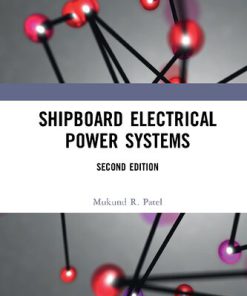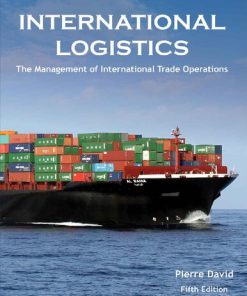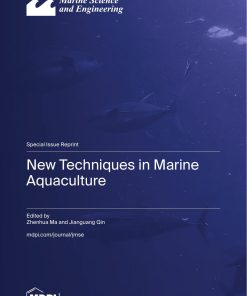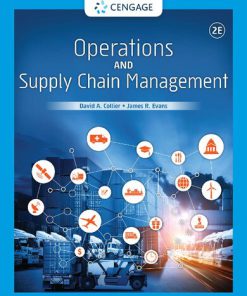Seamanship Techniques : Shipboard and Marine Operations by David House 9781317197706 1317197704
$50.00 Original price was: $50.00.$25.00Current price is: $25.00.
Seamanship Techniques : Shipboard and Marine Operations David House – Ebook Instant Download/Delivery ISBN(s): 9781138676107,1138676101,9781317197706, 1317197704
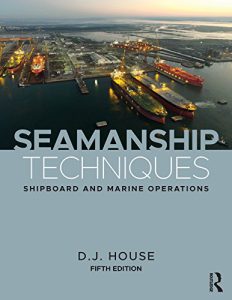
Product details:
- ISBN 10:1317197704
- ISBN 13:9781317197706
- Author:David House
Seamanship Techniques
Shipboard and Marine Operations
Table contents:
1 The Ship
Introduction
Terms and Definitions
Terms and Definitions Concerning Stability
Varieties of Ship Types
Plate and Construction Terms
Main Structural Members: Compensating Stress Factors Affecting the Vessel
Stresses in Ship Structures
Loadlines
International Safety Management
Certificates and Documentation
2 Anchor Work (Fundamentals)
Introduction
Anchors
Tests on Anchors
Marks on Anchors
Anchor Certificate
Chain Cable Tests
Notes on Cable
Kenter Lugless Joining Shackle
‘D’ Lugged Joining Shackle
Securing and Stowage of Anchors
Securing Anchor and Cable
Steam Windlass Operation
Preparing Anchor for ‘Letting Go’
Disc Brake Systems for Anchor Handling Windlass
Cable Holders
Procedure for Coming to Anchor
Clearing Away Anchors
Chain Cable/Stud Link: General Information
Anchor Terminology
Watch at Anchor
Anchoring Facility for High-Speed Craft
Mooring Anchors
The ‘Flipper Delta’ Anchor
3 Ropework
Introduction
Natural Fibre Ropes
Lay of Rope
Small Stuff
Synthetic Fibre Ropes
Bends and Hitches
Working Aloft and Overside
Seizings
Ropework and Cordage Tools
Worming, Parcelling and Serving
Cordage Splice
Whippings
Marrying Two Ropes Together
To Pass a Stopper
Breaking Out New Mooring Ropes
4 Wirework and Rigging
Introduction
Steel Wire Rope
Steel Wire Rope Rigging
Rigging Fitments
Wire Splicing
Stowage of Wire Hawsers
Safe Handling Procedures for Wire Rope
Mousing a Hook or Shackle Pin
Blocks: Care and Maintenance
Blocks and Tackles
5 Lifting Gear
Introduction
Derricks
Union Purchase
Safe Handling Practice for Derricks
Doubling-Up Procedure
Yo-Yo Rig
Hallen Universal Derrick
Velle Shipshape Crane
Heavy Lift Procedures
Cranes and Derricks: Advantages and Disadvantages
Derrick Tests and Surveys
Calculating Stresses in Derricks by Empirical Formula
Cargo Securing Manual
Project Cargoes
6 Cargo and Hatchwork
Introduction
Hatch/Hold Construction
General Cargo Terminology
Duties of the Junior Cargo Officer
Cargo Duties of the Chief Officer
Hold Preparation
Stowage Methods
Cargo Handling
Ventilation
Refrigerated Cargoes
Carriage of Goods in Deep Tanks
Dangerous/Hazardous Cargoes
Cargo Plans
Roll On-Roll Off System
List of Relevant Container Definitions and Terms
Loading Containers
Container Tonnage
Loadicators and Loading Plan Computers
Bulk Carriers
7 Boatwork and Life-Saving Appliances
Introduction
Selected Terminology and Definitions
General Requirements for Lifeboats
Parts of the Lifeboat
Types of Wood Construction
Boat Fitments
Totally Enclosed Survival Craft
Partially Enclosed Boats (as defined by Chapter 4, Section 4.5 of the Code for International Life-Saving Appliances 2003)
Free-Fall Lifeboats
Life-Saving Appliances
Boat Rigging
Launching Procedure
Taking the Boat Away from the Ship’s Side
Boat Recovery in Heavy Weather
Beaching a Lifeboat
Boat Handling and Safe Procedures
Sail Theory
Sail Terminology
GRP Fibreglass for Boat Maintenance
8 Survival Craft and Practice
Introduction
Survival Systems International
The Inflatable Life Raft
Launching the Inflatable Life Raft
Boarding the Raft
Rigid Life Rafts
The Davit-Launched Life Raft
Additional Fitments to Raft
Abandoning Ship
Marine Evacuation System
Evacuation-Slide Launching and Embarkation
MES Variations
Inspection and Maintenance of MES
Marine Evacuation Chute System
Righting a Capsized Life Raft
Beaching a Life Raft
Ro-Pax Vessels in Coastal Waters
Rescue Boats
Emergency Equipment Lockers for Ro-Ro Passenger Ships
Standards of Training Certification and Watchkeeping for Seafarers (STCW)
9 Communications
Introduction
Terminology and Definitions for Communications
Methods Employed in the Marine Industry
Flag Signalling Terms
International Code of Signals
Signalling by International Code Flags
Important Two-Letter Signals
Sample Messages Employing International Code of Signals
Flag Maintenance
Wearing of Ensigns
Morse Code Procedure: Signalling by Flashlight
Morse Code Regular Procedural Signals
Morse Code Signalling by Hand Flags or Arms
10 Watchkeeping Duties
Introduction
Master’s Responsibilities
Master’s Standing Orders
The Integrated Bridge
Functions of the Integrated Bridge
Safety and Redundancy
Watchkeeping: General Duties
Duties of the Officer of the Watch
Duties of the Lookout
Duties of the Helmsman
Duties of the Standby Man
Official Publications
Security
Rigging Pilot Ladders
Ship to Shore Transit
11 Marine Instruments Monitoring and Measurement
Introduction
Sextant
Marine Chronometer
Speed and Depth
The Gyro Compass
Changes in Ships’ Compass Systems
Modern Gyro Arrangements
Magnetic Compass
Compass Binnacle
Dry Card Magnetic Compass
Azimuth Mirror
Pelorus
Automatic Identification System (AIS)
Transponder Information
AIS Unit Components
Voyage Data Recorders
Hydrometer
Hygrometer
Precision Aneroid Barometer
12 Meteorology
Introduction
Meteorological Terms
Construction and Interpretation of Synoptic Chart
Weather Scales
Heavy Weather Precautions (General Cargo Vessel) Open Water Conditions
Effects of Heavy Weather on Vessels at Sea
General Behaviour of Vessels in Heavy Weather
Tropical Revolving Storm
Ice Terminology
Ice Navigation
Single-Letter Signals Between Ice-Breaker and Assisted Vessels
13 Preventing Collisions at Sea
Introduction
International Regulations for Preventing Collisions at Sea, 1972 (as Amended by Resolution A464(XII)) A626(15) A678(16) A736(18) A.910(22) and A1085(28)
Judging Another Vessel’s Heading at Night
Special Cases to Rules of the Road
Collision Avoidance: High-Speed Craft
High-Speed Craft: Features
High-Speed Craft: Watchkeeping Practice
IALA Maritime Buoyage Systems ‘A’ and ‘B’
14 Emergencies
Introduction
Emergency Contingency Planning
Collision
Flooding
Damage Control
Abandonment from the Vessel
Rescue and Recovery of Survivors
Stranding/Grounding
Beaching Procedure
Grounding/Beaching: Summary
Deck Department Checklist for Watertight Integrity of Hull Following Grounding or Beaching
Engine Room Department Checklist for Machinery Spaces Following Grounding or Beaching
Perils of the Sea
Watertight Doors
Drydocks and Docking Procedures
Types of Docking
Hydrolift Docking Systems
Inward and Outward Procedures for Hydrolift Docking Systems
Man Overboard
Helicopter Procedure
Sub-Sunk Procedure
15 Fire-Fighting
Introduction
Equipment for Onboard Fire-Fighting
Additional Requirements for Passenger Vessels
Roll On-Roll Off Vessels
Tanker Vessels (Class 7T)
Small Fires
Accommodation Fires at Sea
Galley Fires at Sea
Machinery Space Fires at Sea
Cargo Space Fires at Sea and in Port
Paint Room Fires
Fixed Fire-Fighting Installations
International Shore Connection
Self-Contained Breathing Apparatus
Contents of Firemen’s Outfits
Example: Cargo Fires
Roll On-Roll Off Vessels: Fire-Fighting Difficulties
16 Search and Rescue Operations
Introduction
Action by Vessel in Distress
Master’s Obligations
Obligations of Rescuing Craft
When Assistance is No Longer Required
Searching the Sea
Aircraft in Distress
Communication Between Surface Craft and Aircraft
Surface to Surface Rescue
Pyrotechnics
Breeches Buoy
Communications
The Work of HM Coastguard (HMCG)
AMVER (Ship Reporting) Organization
Passenger Vessels: Decision Support System (for Ships’ Masters) Ref, 1996 Amendments to SOLAS, Effective July 1998 (Chpt III, Regulation 29)
Abbreviations for Use in SAR Operations
17 Ship Handling: Equipment
Introduction
Terms and General Definitions
Factors in Ship Handling
High-Speed Craft Categories
High-Speed Craft
Rudders
Propellers
Machinery ‘Pod Technology’ (Pod Propulsion Units)
Turning Circles
Steering Gear Operations
Steering Applications
Steering Test Applications
Auxiliary/Emergency Steering
Bow/Stern Thruster Units
Steerable 360° Thrusters
Waterjet Propulsion
Fin Stabilizers
Manoeuvring with Mooring Lines
Fairleads
Bollards (Bitts)
18 Ship Handling: Manoeuvring and Mooring Operations
Introduction
Berthing
Clearing a Berth
Entering a Dock
Mooring
Securing to Buoys
Letting Go from Buoys
Rigging Slip Wires
Mooring Operations and Deployment of Anchors
Deep Water Anchoring
Laying/Carrying Out Anchors
Clearing a Foul Hawse
To Weigh Anchor by Deck Tackle
Anchor Recovery: Loss of Windlass Power
Hanging Off an Anchor
Lost Anchor and Resecuring of Spare Anchor
Turning Vessel Short Round
Interaction
Shallow Water Effects and Squat
Working with Tugs
Composite Towline
Emergency Towing Arrangement (ETA)
High-Speed Craft and Safe Speed Maneuvering (Ref., Regulation 6, ColRegs)
19 Tanker Operations
Introduction
Tanker Vessels
Tanker Hazards and Precautions
Dangers of Petroleum Spirit
General Definitions
Cargo-Handling Equipment
General Operations and Procedures
Tanker Layout and Ventilation
Gas Freeing (Tanker Vessels)
Health and Safety
Inert Gas
Mooring Large Tankers
Oil Pollution
20 The Application of MARPOL and the Prevention of Pollution to the Marine Environment
Introduction
Abbreviations and Acronyms within MARPOL
Definitions for Use (within the Understanding of MARPOL) inclusive of the Management of Ships Waste/Garbage
Application of MARPOL
Management of Ship’s Waste/Garbage
21 Appendix I: Mariner’s Self Examiner (for the Training of Deck Officers, MN)
22 Appendix II: Officer of the Watch: Certificate of Competency
23 Appendix III: Chief Officer (First Mate): Certificate of Competency
24 Appendix IV: Ship’s Master: Certificate of Competency
25 Appendix V: Rule of the Road: Reference to the ColRegs and the IALA Buoyage System
People also search:
seamanship techniques : shipboard and marine operations
seamanship techniques shipboard and marine operations pdf
what is seamanship in maritime
seamanship manual
seamanship fundamentals
You may also like…
Hobbies & Games - Water Sports
Uncategorized
Business & Economics - Logistics
Animals & Pets - Marine & Aquatic Life
New Techniques in Marine Aquaculture Zhenhua Ma Jianguang Qin
Education Studies & Teaching - Education Management & Organisation
Medicine Medicine - Veterinary Medicine
Veterinary Techniques in Llamas and Alpacas 2nd Edition David E. Anderson
Uncategorized
Business & Economics - Logistics
Operations and Supply Chain Management 2nd Edition David Alan Collier




